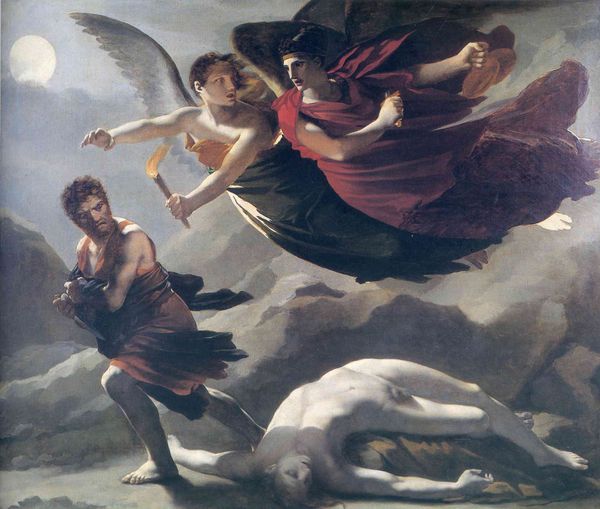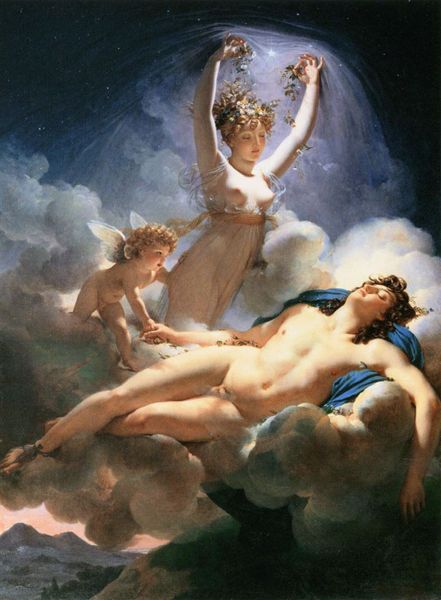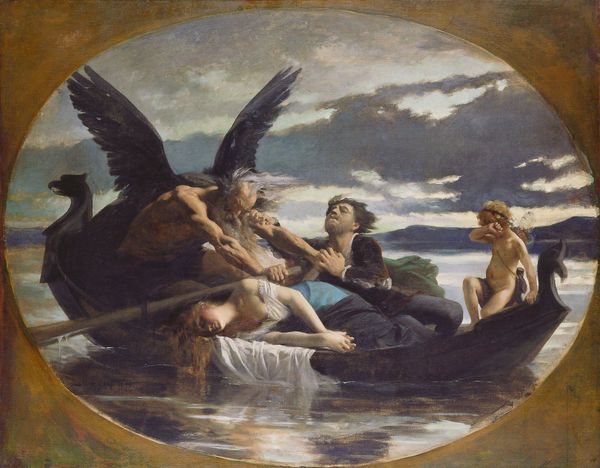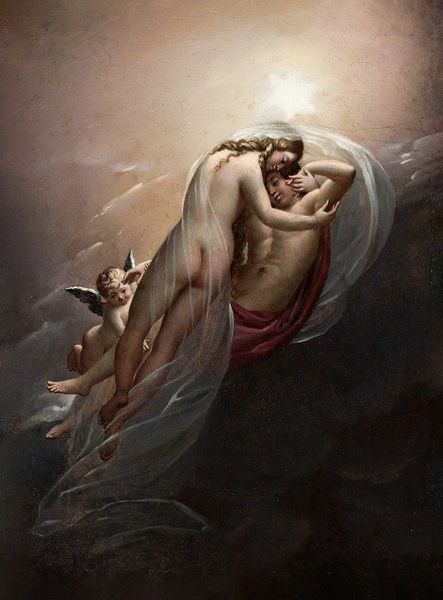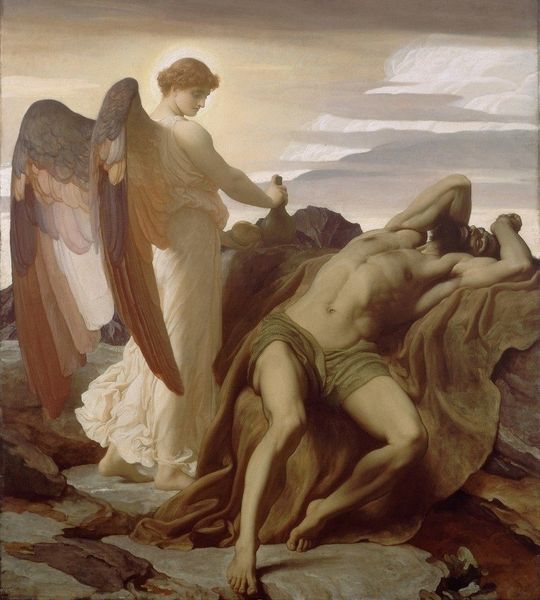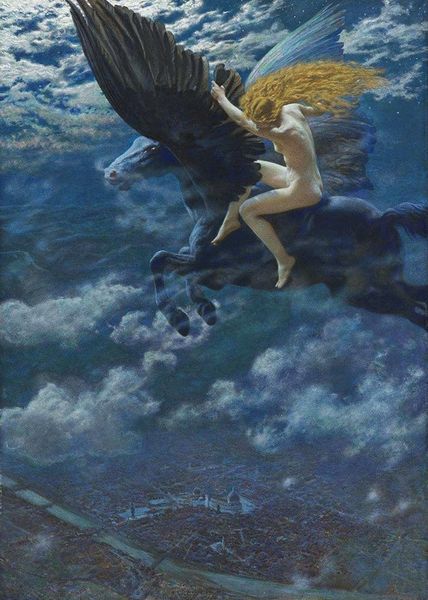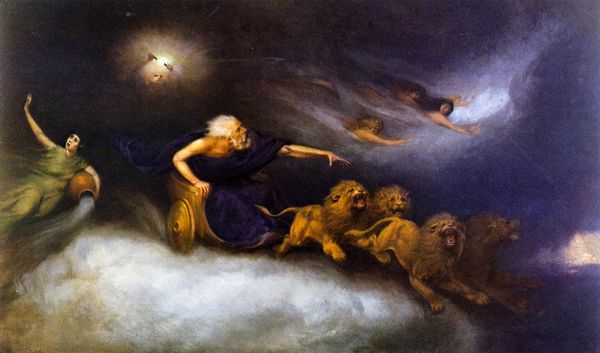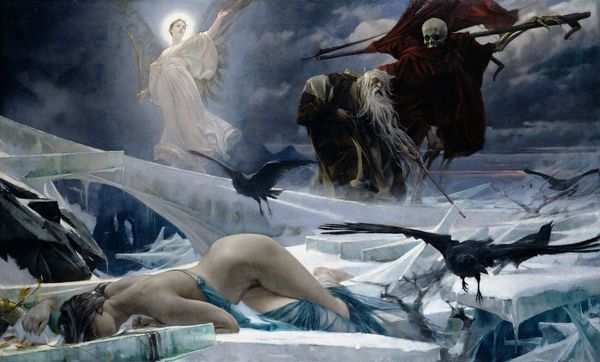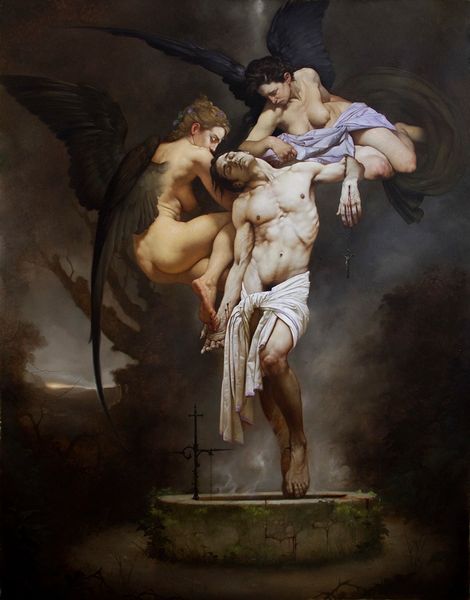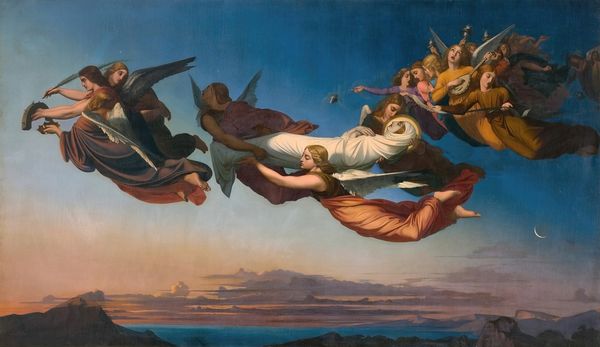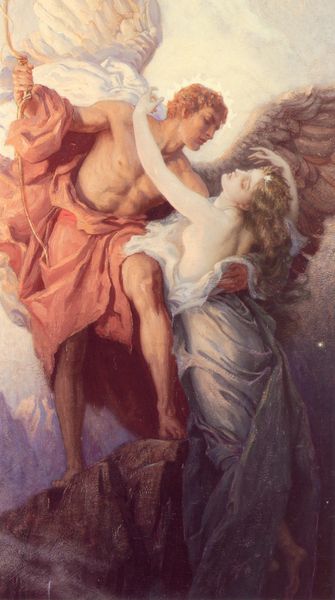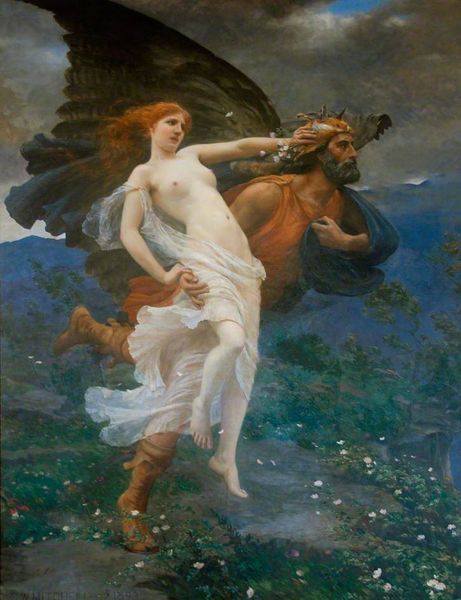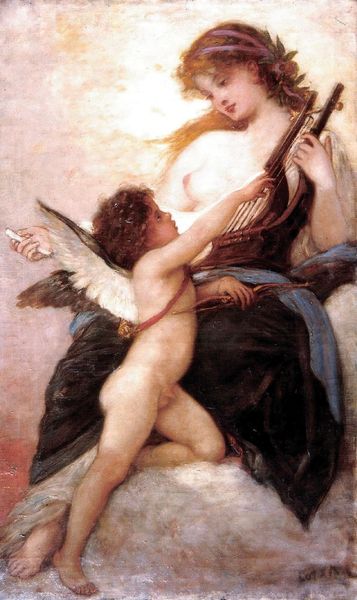
Dimensions: 275 x 180 cm
Copyright: Public domain
Curator: What a perfectly staged, if not slightly melodramatic, scene! The late 19th century adored these. Editor: You’re referring, I imagine, to the inherent theatricality? Absolutely. Look at how Bouguereau directs the viewer’s gaze upwards. It's hard not to get swept away by the lightness, the idealized beauty. Curator: This is William Bouguereau’s "Soul Carried to Heaven," created in 1878. We're seeing the deceased being borne aloft, presumably to paradise. Bouguereau was a darling of the Parisian Salon system; his popularity says a great deal about the conservative tastes of the era. Editor: Yes, “conservative” in that context means clinging to very specific traditions. Bouguereau’s brushwork, those feathery angel wings – it’s all so meticulously rendered! Note how he’s achieved a sort of aerial perspective through subtle tonal shifts, guiding us further into the unknown, hazy beyond. The rosy skin contrasts against the muted palette; death made beautiful, palatable. Curator: The political undercurrents are impossible to ignore. In post-revolutionary France, and a time of great upheaval, paintings like these offered an escape. They reasserted traditional values, religious beliefs, and offered an idealised, reassuring view of death during a period marked by a growth in secular and scientific thinking. The work can be viewed as part of the broader, deliberate, cultural project. Editor: Agreed, but that assuredness you mention manifests through carefully calibrated techniques. The play of light on the woman’s reclining form creates a sense of depth against the angels; a subtle eroticism permeates even this supposedly chaste scene of heavenly ascent. It certainly complicates, and perhaps destabilizes, a solely "conservative" reading, wouldn’t you agree? Curator: Well, Bouguereau was canny. These elements appealed to a range of patrons. We should ask whether such technical skills can really offset the fact that such artwork acted as cultural pacifiers? Still, it certainly sparks conversation! Editor: Indeed! By understanding both the surface and context we begin to uncover new perspectives, enabling our own contemporary encounter with this unique piece.
Comments
No comments
Be the first to comment and join the conversation on the ultimate creative platform.
